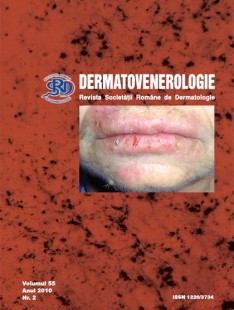General reviews
Diseases and venereal female infertility
According to the OMS data there are recorded annually in the world about one hundred million individuals with venereal diseases(diseases sexually transmitted),these complaints being in fact the most numerous group of transmissible diseases(because in reality their frequency would be 10 times more than the data official declared the so-called “iceberg” phenomen).It is estimated that in the developed countries, between 5% and 10% out of the sexualactive population have annually one or more sexually
transmitted disease.
The female infertility is one of the acute pelvic inflammatory disease complications, cronical or recurrence which causes alteration of micro-anatomy, anatomy and tube phisiology within the parallelism between lesion phenomena and repairing ones characteristic for the disease and type of germs involved. Nowadays the germs involved most frequently in PID determination are: Chlamidia trachomatis(after serology it is estimated that about 60% of all the cases of endometrhitis/salpingitis are due to Ch.tr.), Neisseria gonorrhoeae (presently overpassed as frequency by Ch.tr.), Micoplasme (M.hominis,Ureaplasma urealiticum,M.Genitalium), aerobic and anaerobic flora(de bated along the time).At 25-50% of the women having acute PID there have been isolated out of the superior genital tract anaerobic bacteria in all the cases and aerobic one optionally in 20% of the cases.
The women who had a PID episode have a risk of infertility 10 times higher. The infertility cause by gonococ is 10%.The risk of infertility caused by Chlamidia trachomatis is 15% after the first episode, 30% after two episodes, 50% after three or more episodes. Infection with Ch.tr. is in developed countries the main cause of infertility with tube origin.
A characteristic of the PID complications is that the evolutive infections-inflamatory lesions and the repairing ones are parallel, fact based on the typical microscopic modifications; this aspect explains the risk of appearing complications very early. There are produced alterations of the tube walls (cilium destruction, atrophy of the mucous membranes, nodulation, destructions of the muscle stratum), of the tube orifices (their occlusion) and peritube (adhesion of the structures nearly, changes of the mesosalpinx).


